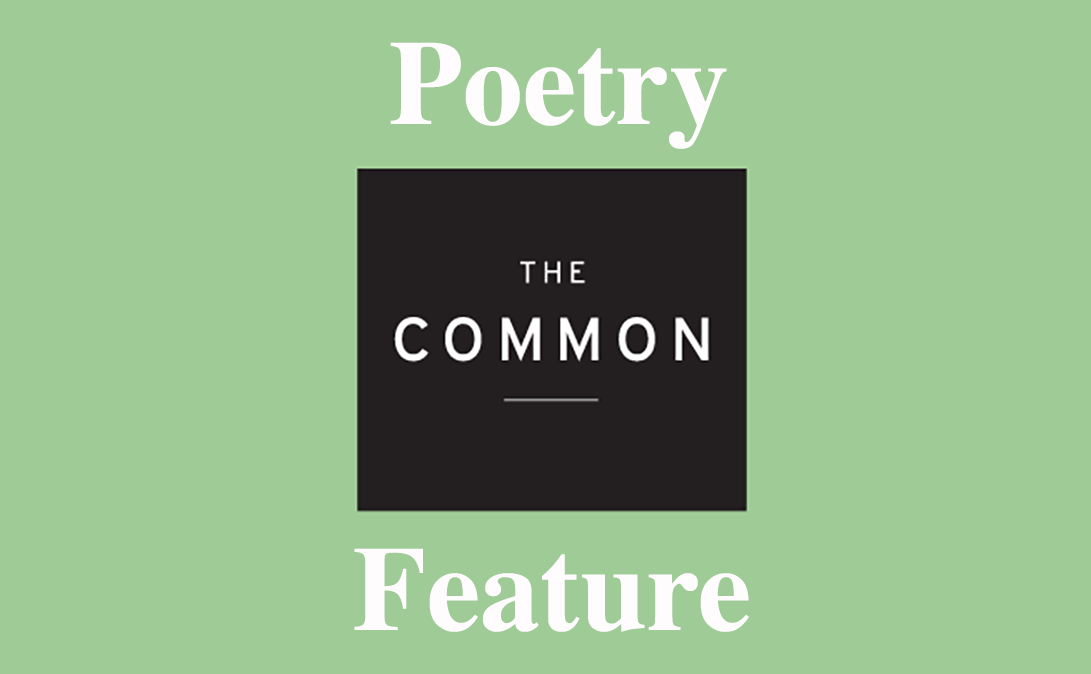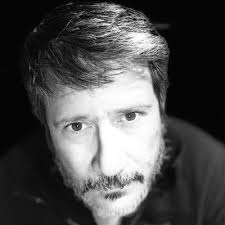This month we welcome back long-time contributor to The Common, John Matthias. His poems previously published by the magazine can be found here.
John Matthias has published some thirty-five books of poetry, translation, scholarship, criticism, and collaboration. He taught for many years at the University of Notre Dame and is a Life Member of Clare Hall, Cambridge. Until 2012 he was poetry editor of Notre Dame Review, and is now Editor at Large. Shearsman published his Collected Poems in three volumes in 2011, 2012, and 2013. More recently, they have published a new volume of poems, Complayntes for Doctor Neuro, and a collection of memoirs and literary essays, At Large (both 2016). His most recent book is a collaboration with printmaker Jean Dibble and critic Robert Archambeau, Revolutions (Dos Madres, 2017). Two collections of critical essays have been published on Matthias’s work, Word Play Place, edited by Robert Archambeau, and The Salt Companion to John Matthias, edited by Joe Francis Doerr. “Prynne and a Petoskey Stone” is part of a new book now taking shape, which will be called Acoustic Shadows.
PRYNNE AND A PETOSKEY STONE
1.
Prynne and a Petoskey Stone
is, I know, a fairly ridiculous title; and yet
it came about quite naturally. It also has what
Edward Dorn once said about a line of his own
on Charles Olson, “a good syllabification,”
not to mention nice alliteration: Let it preen
as you say it: Prynne and a Petoskey Stone.
The White Stones, a book by Prynne, arrived
in the mail from NYR Editions reprints,
a version of the Grossteste original, 1969.
I’ve known the book since then, but wanted
to see what it looked like gizzied up and
canonized: introduction, index of first lines,
and all that sort of thing. I was so keen to see it,
in fact, that I had it sent to Walloon Lake, MI,
where I’m vacationing. From the same box
on the same day I also fished A Complete
Guide to Petoskey Stones. Now you understand.
No one could resist some kind of association,
absolutely on the spot. Imagine walking back
to Prynne’s favored Pleistocene – a phase
that is “our current sense” – all the way from
the Devonian and Carboniferous, four hundred
million years ago, more of less, to us.
2.
Pebbles on my mantle are
from Aldeburgh beach and neither white
nor from a coral petrified in time then broken
by the weight of glaciers, bottom washed
in shallow water from the Gulf of Mexico
to Michigan. The mantle stones are choir:
mixed among them are some jagged pieces
of Berlin’s broken wall, flaking off
the red and blue of a protester’s paint.
The wall fell. The corals on Petoskey shores
arrived as hexagonaria percarnata, leaping
from the Paleozoic to hex new hominids and
brother creatures on the Ellsworth shale.
My Aldeburgh stones recall the choral singing
at the Orford church, the stones from Berlin
a chapter of our inhumanity. And JHP’s NYR
white stones? I’d pass him a Petoskey in exchange
for one. Exchange is his subject, and profound
as weight or measure in the alchemy of night.
3.
In fact, my awkwardness includes a dizzy head
of syllables attempting dance, a breathless
hunting for the line. Once at his college, I wore
a borrowed gown and spilled my glass of wine
to high table merriment, but still I thought it
was a fond libation. The old poet is over eighty
and undaunted. Even I am halfway through
my seventh decade. Not so long, declares
the gay geologist of one’s imagination. Gay
in Yeats’s sense, not in the sense of our
contemporary speech. In America, I said,
we have but low tables, though often high style
in spite of that. May the Master please forgive
my spillage and its mopping up. Look, I said,
I’ll put this pocket full of white stones among
Petoskeys and the Aldeburghs, I’ll even put
them in my mouth for eloquence. At the state
fair in Ohio, there was a contest for the
spitters forth of watermelon seeds – a serious
art where I grew up – and one year the eight yards
covered by my seed won me second place.
Imagine what I could have done with these
smooth stones from Aldeburgh and Petoskey,
or white ones from a book. I’d honor certain poets,
and their places that’s for sure,
but also claim my distance fffffust fffffust ffffffust.
4.
Ovoid with a kind of swollen belly, the unpolished
stone caught my eye one morning in the
shallow lappings of the lake. I picked it up and
brushed its egg-shaped surface with a cloth, washed
it with Chablis I carried in my bag. If a stone can
be said to have a top, its highest hexagons began
to shine in all their mathematical precision
and their pre-configuration of a Fuller geodesic
dome as its corals, formed when only fish could see,
evolving from extraordinary violence – birds
and dinosaurs, the first primates, mammoths,
all now above the deep shale over which an ice
of quaternary glaciers lay – raised questions to be
only left unsolved –
5.
What is the answer, then?
Or, as Miss Stein said, what’s the question?
“Left unsolved” are questioners who are outlasted
by all stones, even by the concrete pieces of a wall
destroyed by the young when they, born among the
warring clans, started getting old. My daughter picked
up pieces, brought them home. Asked what degree
of failure a poet might endure, one could refer to
a man out of Idaho, whose “Problem of the Poem
for my Daughter, Left Unsolved” could signify
a white stone, like a pearl and a diamond sometimes
signify a daughter left behind or running on ahead.
Or like Petoskey coral and an Aldeburgh pebble
might, placed together on a mantle piece,
taken from their seas and washed by human
hands, could also signify in ways that are transient
but more than transitive. Corals choired in
the shallow sea that covered our peninsula before
it moved from the equator to below the UP bridge.
6.
A high, stable stile – is there such a thing?
Circe’s chosen cannot reach it, so they spit
their stones at undergraduates ranged in
hungry rows below the stage. I show
my one Petoskey and my several Aldeburghs
but am not admitted. In desperation’s dream, I show
my daughter’s two pieces of The Wall, and
then awaken in the People’s Pub. Privileged there,
I buy a pint and point to a portrait on the wall
of a poet in his prime: That was me (‘twas I)
when young I say to fellow geezer at the bar.
Would you believe it? I carried with me then a
pocketful of white stones and put them
in my mouth when I would speak. They were
like manna and they fed the Midwestern mind:
I spoke from The Torrents of Spring and told
of Yogi Johnson, Scripps O’Neil, and the waitress
at the beanery, 1926, Charles Scribners Sons, and
of a man who said his father was at Eton with
a Gladstone bag in Wellingtons, all sourced in
self-important Earnest Sherwood. They showed
me their Petoskey stones, one found at the cutbank,
one in a gravel pit, one at Cathead Point, and one at
the Sleeping Bear Dunes. They passed around the
220 and 600 grit, aluminum oxide and felt cloths
for buffing, messing up the job in a rush to finish with
a thin application of transparent fingernail polish.
(My text, I was certain, had lacked polish,
was like my manners with the college wine.)
7.
Do we emerge from melon seeds as Chinese
singing in Shijing maintain, in Arthur Waley’s version,
that we do? I spat my contribution in Columbus once
with that question left unsolved from
pre-dynastic Zhou, returning to a memory.
I’m also puzzled by the pieces of the wall;
just what do they mean? “A Stone Called Nothing”
is the fifth to last title in the final pages of the
old Grossteste book, signed in 1969, three fifty-six
of four seventy-seven copies printed, Number 1,
Stonefield Avenue, Lincoln UK, set in ten point
Plantin type: You say I / think or not /
get on / get off / quiet / match the stone. I note,
like some Confucian sage, that melon seeds
bring melons, peach seeds peaches, cherry seeds
the cherry trees that blossom here; I’d pour
a quick libation, pocket pebbles from the Aldeburgh
beach if I were there. Here, I’ll shine the corals
petrified by time and left behind by melting glaciers
still receding , which eventually will make this
shore and all the inland reaches of our low lying land
once again a warm and shallow sea
Read more of John Matthias in The Common here.




